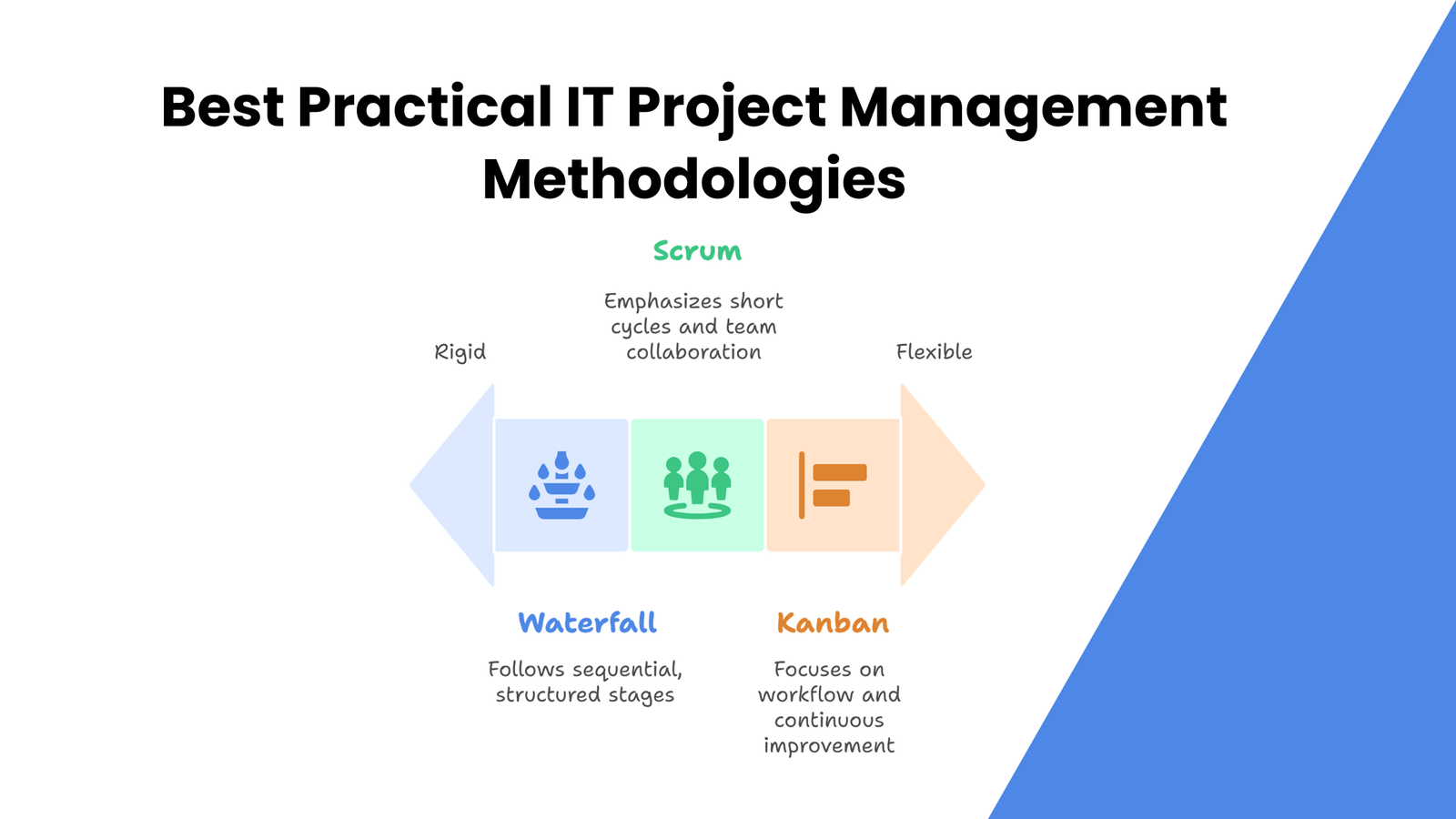
Choosing the right IT project management methodologies is not just a procedural decision; it’s a strategic infrastructure. Project delays, missed deliverables, and escalating costs are rarely technical in nature. I strongly believe that these operational failures result from mismatched methodology and execution models based on my industry expertise and the project audits I have conducted.
The end goal is always delivery reliability, faster iteration, and aligned team effort. Project leads need to understand and know exactly which frameworks to apply, when to apply them, and how to transition between them without striking the flow and momentum of the project. All technical workflows depend on these methodologies, so it is more than necessary to choose the best and know the difference between constant blockers and continuous velocity.
Agile: Flexible Execution for Moving Targets
Agile project management methodology is widely recognized as the dominant technique in IT today. It thrives in environments with requirement shifts because it works pretty well where product direction evolves and user feedback drives iteration. It has a room for rapid experimentation without compromising overall delivery momentum, and that makes it one of the most powerful IT project management methodologies available.
One of the perks of agile project management is that the technical project manager can easily align developers and stakeholders without compromising the flexibility and completion timelines. This is primarily attributed to leveraging frequent release cycles, adaptive scope management, and backlog prioritization.
How is it done?
This PM method opts for iterative development where the project is fragmented into manageable sprints (typically 1–3 weeks). Each sprint begins with proper planning and ends with review and retrospectives. Stand-ups, backlog grooming, and sprint demos ensure constant alignment. This entire process makes it a mindset instead of a toolset because it values working software, adaptive plans, and close collaboration.
What projects is it suited for?
Agile suits software development, user-facing applications, and evolving feature sets. It’s ideal for teams with cross-functional responsibilities, such as DevOps, design, and frontend/backend coordination. Agile also supports experimental builds where feedback cycles are key to shaping the product roadmap. If speed, adaptability, and tight feedback loops are commonplace, then agile works best for you.
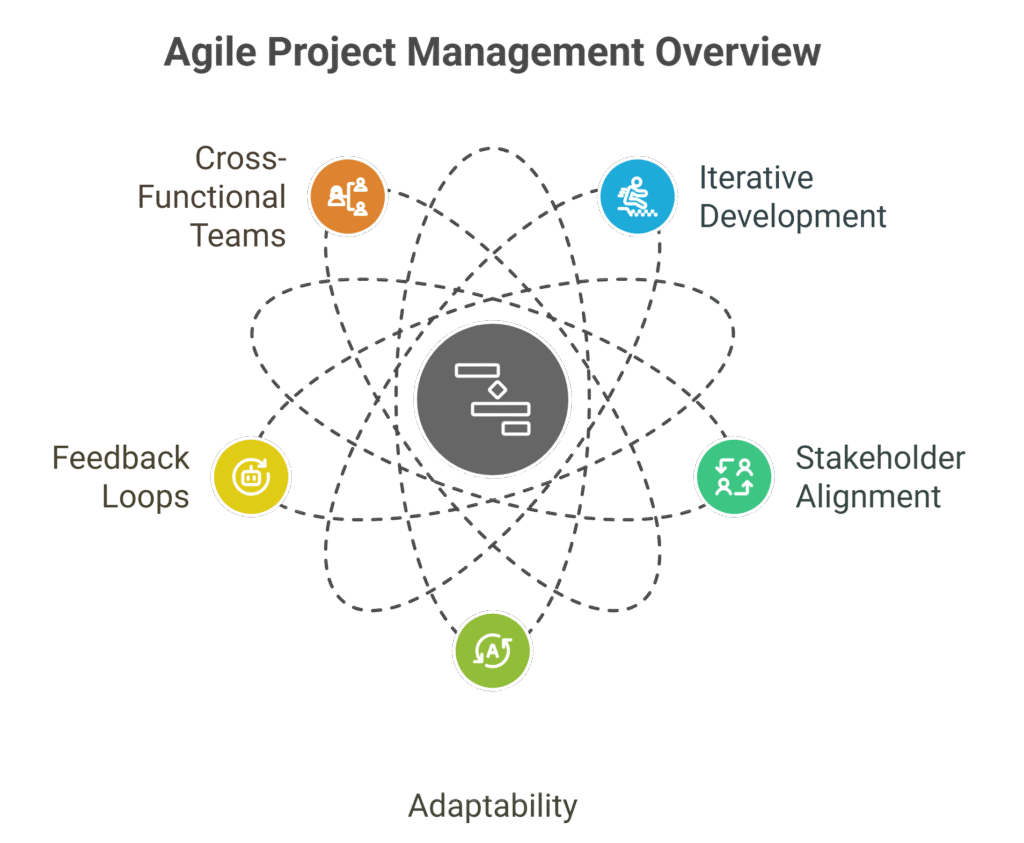
Waterfall: Linear Clarity for Fixed Requirements
Waterfall is a structured, phase-based approach that emphasizes clarity, documentation, and sequential progress. This methodology is often criticized by stakeholders that it is quite rigid. It however, does not change the fact that in 1005 of the highly controlled environments where predictability and compliance take priority, it is the best and most reliable technique.
This methodology minimizes risk in long-term IT initiatives with well-defined objectives. It remains one of the most dependable IT project management methodologies when the cost of change is high or when outcomes must be fully validated before implementation.
How is it done?
Waterfall requires all planning to be completed upfront. Requirements are defined in detail, followed by design, development, testing, and deployment in sequential phases. Each phase must be formally completed and signed off on before the next begins. Changes mid-cycle are rare and discouraged, making early documentation and validation crucial.
What projects is it suited for?
In infrastructure rollouts, enterprise software deployments, ERP implementation, and heavily regulated industries like finance, healthcare, or aerospace, the waterfall methodology is undoubtedly the best. Another differentiator is that it is pretty much effective for government contracts where contractors are provided with milestone-based payments.
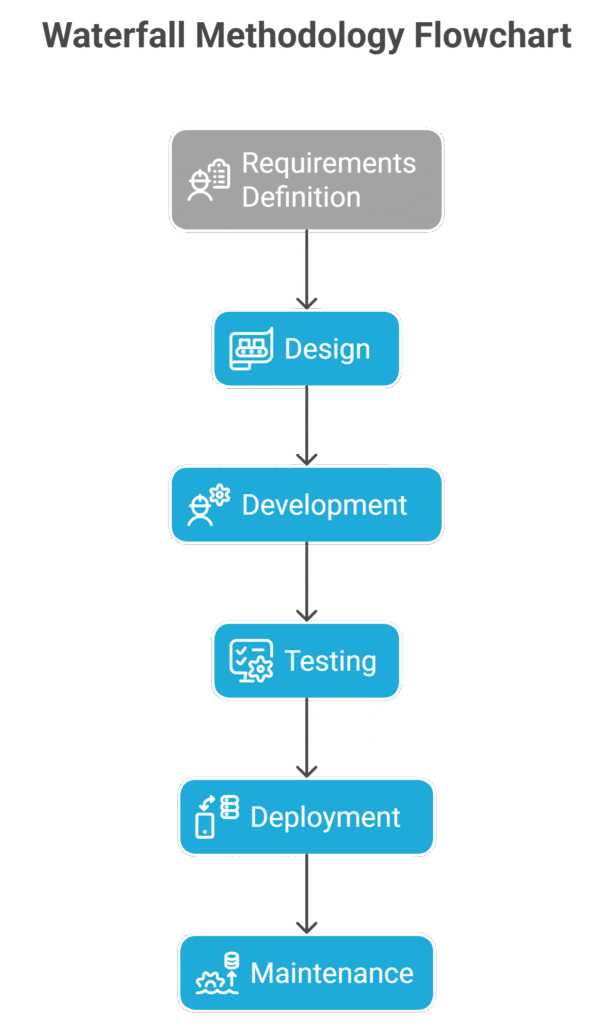
Scrum vs Kanban: Cadence vs Flow in Agile Systems
Both of these project methodologies are agile-aligned, but they serve different operational realities. They do have differences, though. Scrum is cadence-driven with regular checkpoints for reassessment. Kanban is based on flows and focused on limiting Work In Progress (WIP) and optimizing throughput.
Knowing when to choose Scrum, Kanban, or a hybrid approach helps technical leads implement IT project management methodologies that match delivery culture and scope complexity.
How is Scrum done?
Scrum relies on structured sprints (usually 2–3 weeks) with a set backlog. It defines roles: Scrum Master (facilitator), Product Owner (scope owner), and the delivery team. Ceremonies like planning, daily standups, reviews, and retrospectives are mandatory. Scrum creates rhythm and accountability in team delivery.
What is Scrum suited for?
Scrum suits feature-driven software development, sprint-based roadmaps, and cross-functional product squads. It’s effective when predictability and structure are needed in high-paced iterative builds.
How is Kanban done?
Kanban operates continuously, where work items are pulled based on team capacity. Tasks move across columns (e.g., To Do → In Progress → Review → Done). It prioritizes transparency and flow over sprint timing. WIP limits keep teams from being overwhelmed and help identify bottlenecks.
What is Kanban suited for?
Kanban is best for maintenance teams, internal IT support, QA pipelines, or service desks. It excels in situations where requests are variable and need immediate visibility rather than long-term roadmapping.
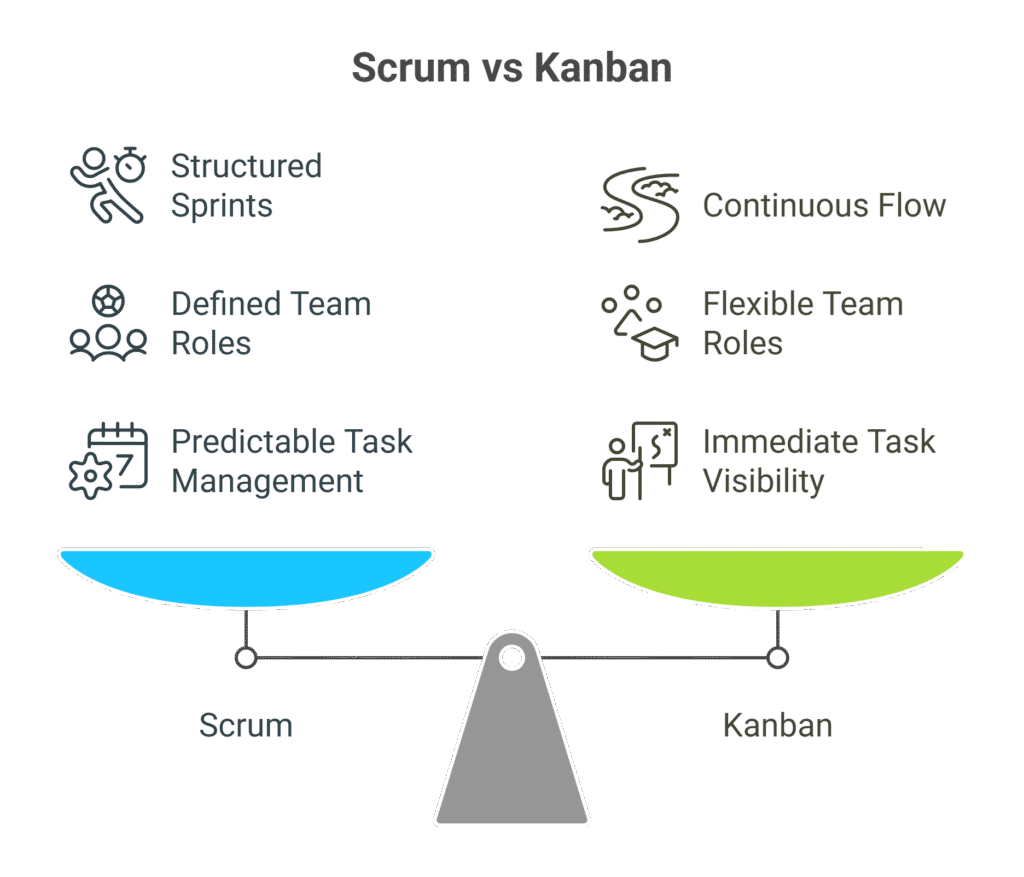
Tips for Project Management in IT Teams
Strong execution begins with proactive process design. Even the best IT project management methodologies fall apart without healthy internal habits and process discipline. It’s not just about following the method; rather, it’s about knowing how to support it. These strategies help reduce tech debt buildup, improve delivery confidence, and support Agile sustainability.
These actionable tips for project management are rooted in real-world implementation across technical teams:
Use consistent tooling (e.g., Jira, Notion) to maintain a single source of truth
Validate scope with both engineering and product leads before sprint kickoffs
Schedule mid-sprint reviews to course-correct before final delivery
Align tasks with value-based outcomes, not just technical completion
Track and visualize historical sprint velocity for realistic capacity planning
Project Management Tips and Tricks
You are wrong if you count on speed as an efficiency metric. It does not apply to PMs at all. In IT project management, efficiency revolves around removing friction points, improving visibility, and supporting smarter decisions to complete the project.
These project management tips and tricks make a tangible difference in delivery timelines, even in high-stress builds.
Build visual roadmaps tied directly to user stories or tickets
Use sprint retrospectives to track recurring blockers and fix root causes
Automate routine reports and status updates to free up planning cycles
Timebox feature estimation to prevent over-commitment
Maintain a central backlog for cross-team task coordination
Product Manager vs Project Manager
One of the oddest things I have come across is the confusion in the product manager vs project manager roles. While breaking things down, I figured the confusion leads to duplicated work, unclear accountability, and poorly scoped delivery. These are two different dimensions of work and are never interchangeable.
What do product managers do? They focus entirely on the product. What to build? They are driven by user insights, goals of the business, feature roadmaps, and everything that makes the product the “desired product”.
What do project managers do? They focus on the quality of the product. How and when will the product be built? Their emphasis is on the timelines, budgets, and scope, which are defined by the functional requirements and the specs.
Are both roles different? Yes! However, both must collaborate throughout the project to ensure everything falls in place the moment you say “project is completed.
Without this clarity, IT projects suffer from feature bloat, scope creep, and endless iterations that lead to burnout rather than breakthrough.
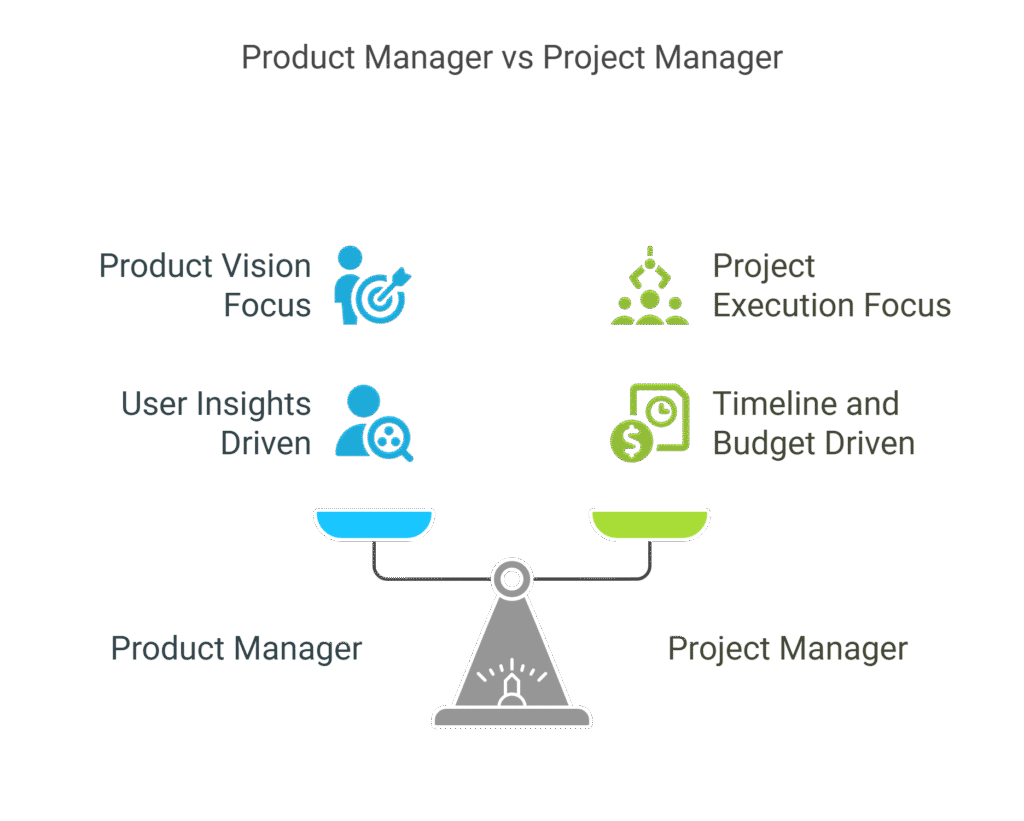
Technical Project Manager Ensures Systems Meet Strategy!
A technical project manager bridges the gap between engineering logic and business delivery. This role requires the ability to assess feasibility, translate features into architecture tasks, and manage stakeholder expectations with evidence-based updates.
Technical PMs don’t just track progress, they shape it. They’re able to spot technical debt early, question misaligned user stories, and preempt infrastructure bottlenecks. Their ability to interface directly with engineers makes them critical in systems involving API integrations, modular microservices, and CI/CD environments.
They serve as delivery architects, ensuring that tech stacks don’t just function, but function with purpose.
When to Mix Methodologies
In many real-world teams, pure methodology fails. Hybrid approaches are more common than not. Blending IT project management methodologies allows organizations to create layered workflows where each phase serves a different purpose.
Teams may use Waterfall for up-front planning, Scrum for feature execution, and Kanban for bug triage. This aggregation of strategies ensures control at the top, while delivery teams are offered the agility they need with ground operations.
Adaptation to the best methods is based on team structures, stakeholder needs, and the complexity of the project. Therefore, the best IT project management methodologies are applicable with certain KPIs in check. All you need is a great technical project manager with a grip on all techniques to ensure smooth execution across the delivery chain, from product planning to final release.
Frequently Asked Questions
Agile methodology with Scrum or Kanban is typically the best for complex builds, but hybrid approaches allow for scale while managing risk.
Product managers define the product and what should be built; project managers handle how and when that product is built. Each manages different dimensions of success.
Yes. Agile assumes high maturity, but technical PMs bring critical translation between product strategy and engineering delivery.
Yes, but only with careful transition planning and stakeholder buy-in. It’s best done between phases or sprints.
Not entirely. Waterfall still has relevance in infrastructure, compliance-heavy, and regulated project environments where change carries significant cost.